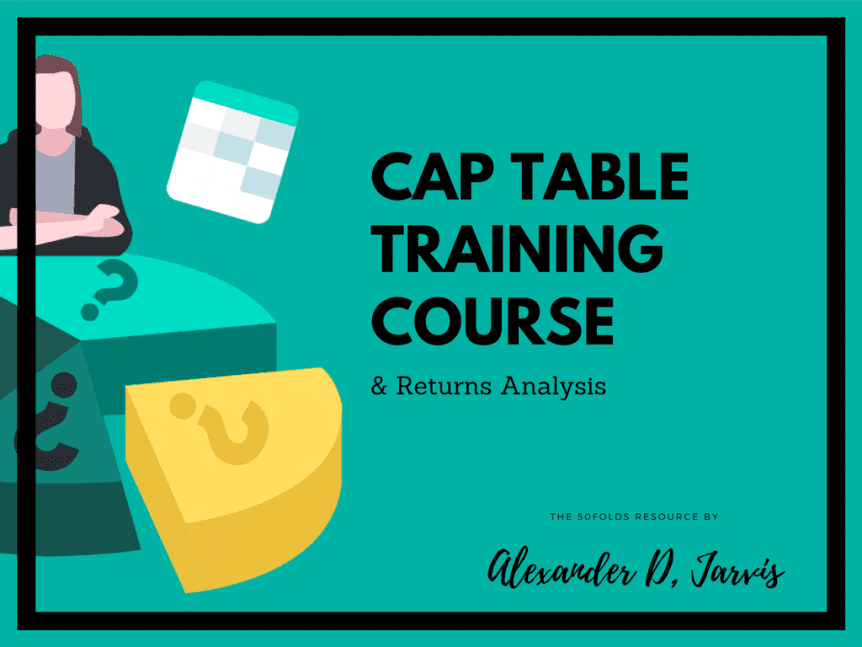Tl;DR: This is the 13th part of the Pro Cap Table training course where we deal with accounting for convertible debt and warrants. In this series we go through the basics you need to know, then worksheet by sheet so you know how to make a seriously kick-ass cap table.
There are 14 parts:
- What is a cap table and other important questions
- Cap table dilution step by step example
- Cap table dilution math
- Starting the cap table (The drop down menus we need)
- Shareholders sheet
- Deal calculations
- The cap table sheet
- The assumptions sheet
- Individual shareholder returns sheet
- Returns waterfall calculation
- The ESOP sheet
- The Common sheet
- The convertible notes and warrants sheet
- The preference shares sheets (From Series A to I)
You can join the course and get these sent straight to your mail box here:
We are going to cover two sheets today (convertible debt and warrants).
Let’s go over accounting for convertible debt in the Notes sheet.
If you don’t know this well, recommend you read:
- Convertible note conversion math at Series-A
- Seed round convertible, priced and SAFEs. What venture capital terms are standard?
At the top of the sheet are calculations to make filling in the sheet easier. You know what the conversion price is per round. This is used to calculate the shares CNs get.
Input the names of the Angels.
Next, you want to add the class of share they will be converting into. If you do a CN seed round, then this is going to be your series-a.
Input the issue date, which is basically the seed close date. Then add the maturity date – this is typically 12 months after the issue date.
If you cancel the convertible debt for some reason, add the date of cancellation.
The date of conversion is pulled from the inputs at the top.
Note term simply is a check to tell you how many months the convertible debt can last for.

Here are the terms of the convertible debt.
The principal amount is how much is invested. The interest rate is whatever you agreed to pay. Interest calculated the interest portion for you.
The cap is whatever you agreed as is the discount.
The effective discount is super handy. This calculated the actual discount rate the CNs get depending if they would opt to use the cap or discount.

The conversion price is the effective discount on the conversion price of the actual round (eg S-A).
Next, we see how many shares investors get from principal and interest. You add the two.
- Underlying Principal Shares
- Underlying Interest Shares
Comments are comments. They invested in the seed round so they should convert into S-A class of shares.

Now let’s do Warrants in the Warrants sheet.
Input the investor name and the warrant cert number.
Input the issue date and expiration date, similar to what you did in the CN sheet.
Input the class of stock they elect to convert into. Warrants are different to CNS in that they give a lot more flexibility to investors (typically).
- Exercise price – if they exercise, what price? That’s at series a in this example
- Warrant Shares Issued – how many shares did they get issued?
- Date of Exercise – what’s that date when they choose to exercise
- No. Exercised – They may not need to exercise all of them, so how many are exercised
- Date of Cancellation – If you cancel them, what date?
- No. Cancelled – how many were cancelled
- No. Outstanding – how many are still outstanding. This is a calculation
- Comments– add comments…
Warrants are not common which is why I am not spending a tonne of time on them.

Click here to continue
The preference shares sheets (From Series A to I)Show off to your friends. Hit a social button to share the cap table love!

